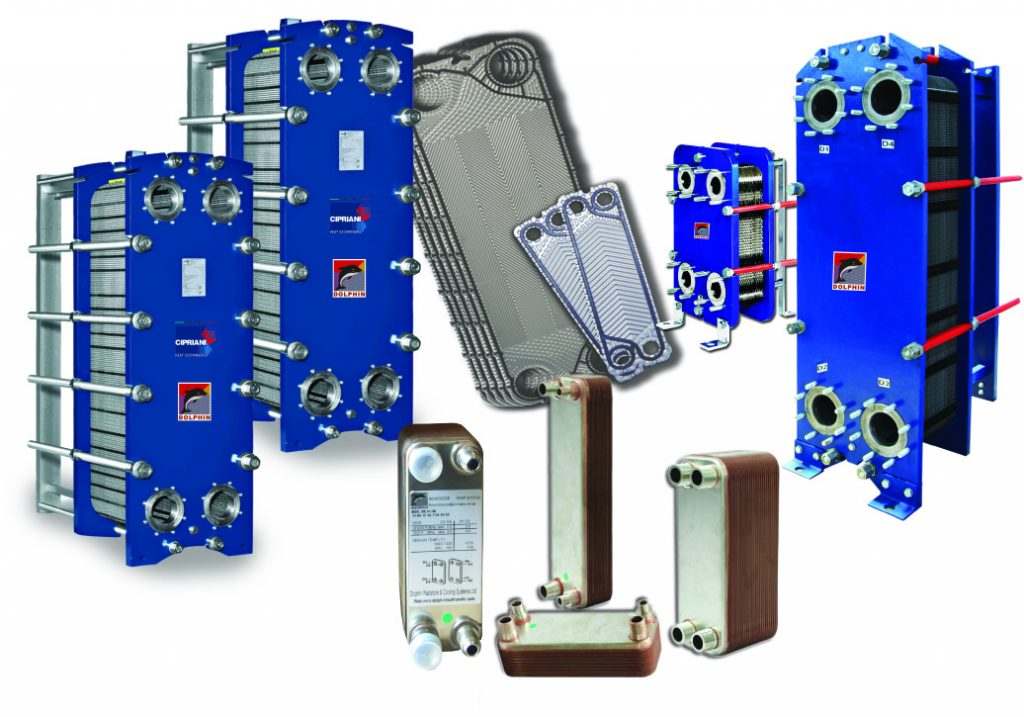Plate Heat Exchanger
DOLPHIN has tied up with CIPRIANI, Italy, to serve the Middle East region with the latest Plate Heat Exchangers. CIPRIANI provides wide range of PHE’s promising long lasting guaranteed performances.
Why use a plate heat exchanger?
Compared to the traditional spiral or shell-tube heat exchangers, PHEs of similar capacity take up very little floor space and at the same time are easily expandable. PHEs deliver greater efficiency, lower cost, easier cleaning and maintenance, and a closer approach temperature than any other heat transfer technology.
How does a Plate Heat Exchanger Work?
Like PHE’s in general, the Dolphin Plate Heat Exchangers from CIPRIANI provides more efficient heat transfer by design. Each unit consists of a series of grooved plates that are individually gasketed and pressed tightly together by compression bolts within a frame. Fluids enter and exit the PHE through portholes in one or both ends of the frame. Within the unit, the fluid to be heated or cooled flows down one side of each plate, while the heating or cooling medium flows in the opposite direction across the other side. The huge temperature difference created by these opposite flows allows maximum heat transfer efficiency for closest possible approach temperature.
Brazed plate heat exchangers consist of a number of thin, acid-resistant plates, precision, stamped and assembled as a unit, each alternate plate being rotated 180º. The plate pack, assembled with two end Plates and connections, is vacuum brazed at extremely high temperatures providing a permanently sealed heat exchanger.
Distinguishing itself from Plate Heat Exchangers, BPHE doesn’t contain rubber gaskets and can thus operate continuously from temperatures ranging from -180°C up to +200°C.The operating pressure can be as high as 30 bar.
Brazed plate heat exchanger can be used for heating and cooling of clean liquids. Furthermore, the brazed plate Heat Exchangers are used for
- Solar heating and air-conditioning units
- District heating
- Heating pumps and heat recovering units
- Hydraulic oil units
- Refrigeration
- Compressed air units
- Evaporator and condenser units
- Paper Industries
- Engineering Companies
- HVAC Applications
While hot and cold fluids flow in opposite directions across a single plate, the flow pattern between plates can vary.
- A single-pass arrangement means that each fluid flows in the same respective direction across all the plates in the unit.
- A multi-pass arrangement is designed so fluids can change their respective flow directions.

